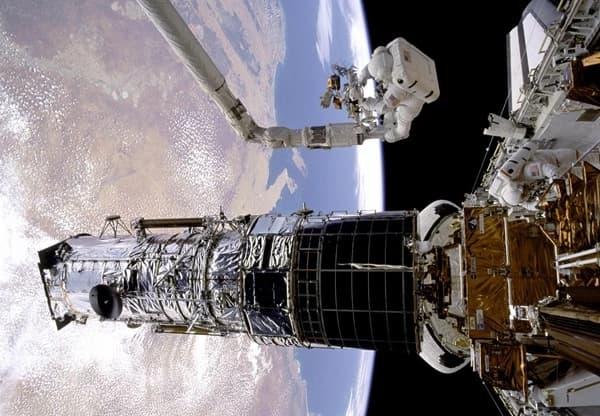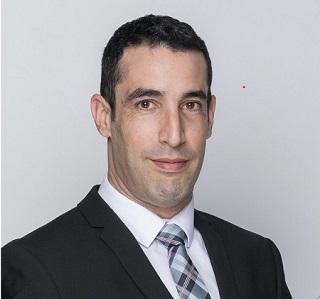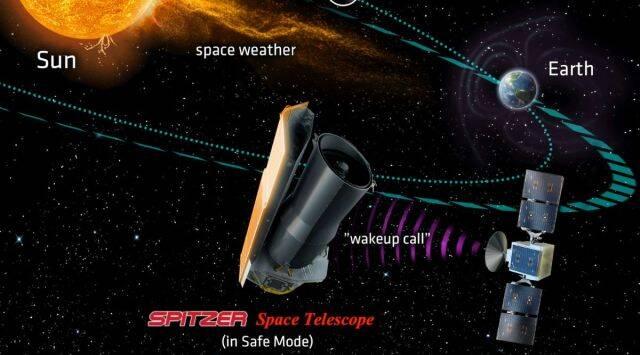The "new space" revolution has lowered the cost of launching into space, thus creating many markets out of nothing. One of the most intriguing markets created in recent years is the satellite maintenance market: instead of launching a new satellite, it is more profitable to launch a service satellite that will refuel or raise the existing satellite – and thus extend its life. Now, new service satellites are being recruited to save the world's most famous satellite: the Hubble Space Telescope.
Hubble was launched more than thirty years ago and is nearing the end of its life. The beloved space telescope is in perfect working order, and it continues to be used by astronomers from all over the world, but it is falling back towards Earth as a result of atmospheric drag – and it is expected to burn up in the atmosphere over the next decade. Moreover, parts of the 12-ton telescope – such as the main mirror and the telescope body – are expected to survive re-entry into the atmosphere and damage the ground, with the possibility of damaging property or harming human life.
Hubble was launched by the space shuttle, Discovery, and NASA’s original plan was to land it back on Earth with a space shuttle and to put it on display in the Smithsonian Museum. That, of course, is no longer possible as the shuttle fleet was retired in 2011, and the Discovery, Enterprise, Atlantis and Endeavor shuttles have all become museum exhibits themselves.

Even before that, on the fifth and final service mission to the Space Telescope in 2009, the astronauts of the space shuttle Atlantis installed a soft docking mechanism on the telescope to allow any other spacecraft – manned or automated – to connect easily to the telescope and to change its orbit, whether for the purpose of extending its life or to crush it in a controlled manner.
In October last year, the US space agency and the New Space pioneer SpaceX announced that they were examining the technological and economic feasibility of launching a service mission to the Hubble Space Telescope – apparently using a Dragon spacecraft. Thanks to the docking mechanism installed by the Atlantis astronauts, there is no difficulty, in principle, in launching a Dragon spacecraft that will connect to the space telescope and lift it from its current orbit at an altitude of 540 km to its original orbit of 600 km above sea level. It is estimated that raising the orbit could extend the life of the telescope by 15 to 20 years.
SpaceX or Astroscale - Momentus?
In an attempt to encourage competition in the new space market, in December 2022, NASA issued a call for other proposals to upgrade Hubble's orbit – other than through SpaceX's Dragon. In May of this year, the two startups, Astroscale and Momentus, teamed up to meet the challenge. The two companies are proposing not only to raise Hubble – but at the same time to clean up its surroundings of space debris.
Astroscale, which was founded in Japan in 2013, bought the Israeli company Effective Space in 2017. In 2021, Astroscale proved its capabilities by launching the ELSA-d service satellite, a dummy satellite designed to simulate an old satellite that would be retired. The service satellite successfully attached itself to the space debris using magnets – the first demonstration of its kind in history. Momentus is developing a tow satellite called Vigoride, which connects to an old satellite and provides it with electricity, communications and propulsion.
According to the joint proposal, Momentus’ Vigoride will attach itself to the Hubble Space Telescope using Astroscale’s docking technologies. “We are talking about launching a small service satellite into a low orbit”, explains Ofir Azriel, CEO of Astroscale Israel, “as soon as it enters orbit Astroscale’s technology will go into operation. It will aid a safe meeting and the robotic docking of the telescope. After docking, there will be a series of maneuvers to boost Hubble’s orbit by 50 km. After completion of the “move” Astroscale’s system will clean up and remove any space debris, which could threaten it in the future, from the area in which Hubble will cruise”. NASA intends to examine the proposal and to reach a decision in the coming months.

Bringing Spitzer back from the dead
Hubble is the most famous space telescope, but it is certainly not the only one launched under NASA’s “Great Observatories” program. Together with Hubble, in observable and near-infrared light, the following telescopes were launched between 1990 and 2003 (all by space shuttles): Compton, which specializes in gamma radiation, Chandra in X-rays, and Spitzer in the infrared spectrum.

Because Spitzer was meant to study the heat signatures of the universe, it was kept as far away from our hot world as possible. In 2009, in part to allocate resources to the new James Webb Space Telescope, Spitzer was retired – and has been wandering around in deep space ever since. Currently, the telescope is two astronomical units away from us, meaning twice the distance from Earth to the sun, and on the other side of the sun – so that there is no possibility of direct communication.
The U.S. Army Space Force recently gave $250,000 to Rhea Space Activity to examine the possibility of bringing Spitzer back to life. According to the plan, in 2026 a dedicated service satellite will be launched, which will give Spitzer the command to wake up. Later, the satellite will remain in the vicinity of the space telescope, to ensure its proper operation and to serve as a relay station for the information it will transmit back to Earth.











